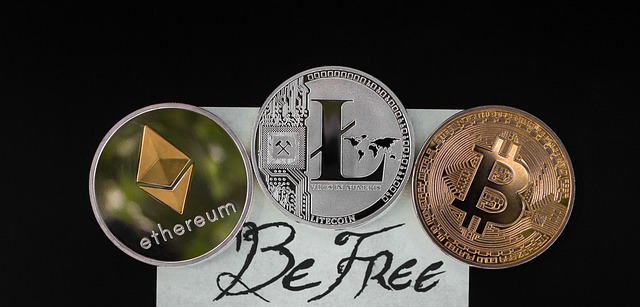Ethereum's blockchain platform has democratized decentralized application (DApp) development by providing a secure environment for transparent and immutable transactions. When designing Ethereum DApps, prioritizing user experience is crucial, especially when integrating cryptocurrency wallets. A seamless UI should separate blockchain components from regular app functionality, facilitate comparisons between different wallets, and ensure robust security measures to protect user funds. Optimizing performance through smart contract and frontend optimizations makes DApps stand out over traditional cryptocurrency wallets. A comparative analysis of top crypto wallets like MetaMask, Trust Wallet, and Coinbase Wallet highlights their distinct strengths, catering to diverse user preferences for a smooth experience.
“Unleash the power of decentralized applications (DApps) with Ethereum, a groundbreaking platform revolutionizing digital interactions. This comprehensive guide explores best practices for developing Ethereum DApps, ensuring robust and user-centric experiences. From understanding core concepts to integrating cryptocurrency wallets seamlessly, we delve into design, security, performance optimization, and even compare top crypto wallets to enhance your DApp’s functionality. Master these practices to create secure, efficient, and accessible decentralized applications.”
- Understanding Ethereum and DApps: A Gateway to Decentralized Applications
- Cryptocurrency Wallet Integration: Best Practices for Seamless User Experience
- Design Considerations for DApp User Interfaces: Enhancing Usability
- Security Measures in Ethereum DApp Development: Protecting User Funds
- Optimizing Performance: Ensuring Fast and Efficient DApp Functionality
- Comparitive Analysis: Top Cryptocurrency Wallets for Enhanced DApp User Experiences
Understanding Ethereum and DApps: A Gateway to Decentralized Applications

Ethereum, as a blockchain platform, has paved the way for decentralized applications (DApps) by offering a robust and secure environment. Understanding Ethereum is crucial when developing DApps as it provides the foundation for creating innovative, peer-to-peer software solutions. DApps are not just regular applications; they leverage blockchain technology to ensure transparency, immutability, and decentralization, marking a significant departure from traditional web development.
A key aspect of developing Ethereum DApps is considering the user experience, especially when comparing it to cryptocurrency wallets. The user interface should be intuitive and accessible, bridging the gap between complex blockchain interactions and everyday users. By focusing on simplicity and security, developers can create DApps that cater to a broader audience, fostering mainstream adoption. This approach ensures that users can seamlessly interact with decentralized applications without delving into intricate technical details, making Ethereum-based solutions more appealing and user-friendly.
Cryptocurrency Wallet Integration: Best Practices for Seamless User Experience

When developing a Decentralized Application (DApp) on Ethereum, integrating a cryptocurrency wallet must prioritize user experience. The best approach is to offer users a seamless switch between interacting with their wallets and engaging with your DApp. A direct integration allows users to connect directly from their preferred wallet, eliminating the need for multiple accounts or complex setup processes. This streamlines the user journey, especially for those new to blockchain technology.
A key consideration in cryptocurrency wallet integration is comparing different wallet providers and their capabilities. Each wallet offers unique features, security protocols, and user interfaces. For instance, some wallets focus on privacy, while others emphasize ease of use or advanced functionality. As a developer, you should choose a wallet that aligns with your DApp’s requirements and the target user base’s preferences, ensuring a consistent and intuitive experience across various platforms and devices.
Design Considerations for DApp User Interfaces: Enhancing Usability

When designing the user interface (UI) for a Decentralized Application (DApp), it’s crucial to strike a balance between showcasing the app’s blockchain functionality and delivering an exceptional user experience. A well-designed UI should make interactions intuitive, ensuring users can navigate seamlessly while managing their cryptocurrency assets effectively. Unlike traditional web apps, DApps require unique considerations due to their direct involvement with cryptocurrencies and wallets.
A key design focus should be on providing a clear distinction between the blockchain components and the app’s regular functionality. This separation aids in understanding complex processes, such as transactions or smart contract interactions, without overwhelming users. For instance, a clean and organized layout can effectively display wallet balances, transaction history, and options for sending/receiving crypto alongside other app features. Facilitating easy comparisons between different cryptocurrency wallets within the DApp’s UI can empower users to make informed decisions regarding their digital asset management.
Security Measures in Ethereum DApp Development: Protecting User Funds

In Ethereum DApp development, safeguarding user funds is paramount due to the sensitive nature of cryptocurrency transactions. Developers must implement robust security measures to protect against common vulnerabilities like reentrancy attacks, where malicious actors exploit loophole in smart contracts to drain wallets. Secure coding practices, such as using well-vetted libraries and conducting thorough audits, are essential. Additionally, integrating secure cryptocurrency wallets, offering multi-signature options, and enabling user verification can significantly enhance the security posture of a DApp.
Comparing user experience with traditional financial institutions is crucial. DApps should provide intuitive interfaces for fund management, easy-to-understand transaction details, and clear privacy policies. A seamless balance between security features and user-friendly design encourages adoption while ensuring users’ assets remain safe. This approach fosters trust in the platform, differentiating it from competitors and solidifying its place in the cryptocurrency landscape.
Optimizing Performance: Ensuring Fast and Efficient DApp Functionality

In Ethereum DApp development, optimizing performance is paramount to ensure a fast and efficient user experience, especially when competing with traditional cryptocurrency wallets. A key best practice involves leveraging smart contract optimization techniques such as gas efficiency and code minimization. Gas, the unit used to measure computational effort on the Ethereum network, should be managed prudently through code refactoring and utilizing more efficient algorithms. By reducing gas consumption, developers can enhance the speed and cost-effectiveness of DApp transactions, making it more appealing for users.
Additionally, focusing on frontend optimization is crucial in enhancing user experience. This includes implementing lightweight frameworks, minimizing HTTP requests, and compressing assets to reduce load times. As users increasingly compare cryptocurrency wallets based on performance, DApps that prioritize fast transaction speeds and seamless interactions stand out. A well-optimized DApp not only offers a superior user experience but also fosters trust and adoption in the Ethereum ecosystem.
Comparitive Analysis: Top Cryptocurrency Wallets for Enhanced DApp User Experiences

When developing Ethereum DApps, choosing the right cryptocurrency wallet is crucial for providing a seamless and secure user experience. A comparative analysis of top crypto wallets reveals varying strengths and features that directly impact how users interact with decentralized applications. Wallets like MetaMask, Trust Wallet, and Coinbase Wallet stand out due to their popularity and robust functionalities.
MetaMask offers extensive DApp support and an intuitive interface, making it a favorite among developers and users alike. Trust Wallet, known for its security measures, provides a user-friendly experience with built-in multi-signature support for enhanced safety. Coinbase Wallet, on the other hand, excels in its deep integration with various exchanges and a straightforward setup process. Each wallet offers unique advantages, catering to different user preferences and use cases, ultimately shaping the overall DApp user journey.
Ethereum DApp development requires a multifaceted approach, from understanding blockchain fundamentals and integrating secure cryptocurrency wallets to designing intuitive UIs and implementing robust security measures. By adhering to these best practices, developers can create decentralized applications that offer users a seamless and enhancing experience. When comparing different cryptocurrency wallets for integration, focusing on user experience comparison is crucial to ensure the DApp stands out in a competitive market. Ultimately, combining efficient performance with a secure environment will drive adoption and foster the growth of Ethereum’s ecosystem.
